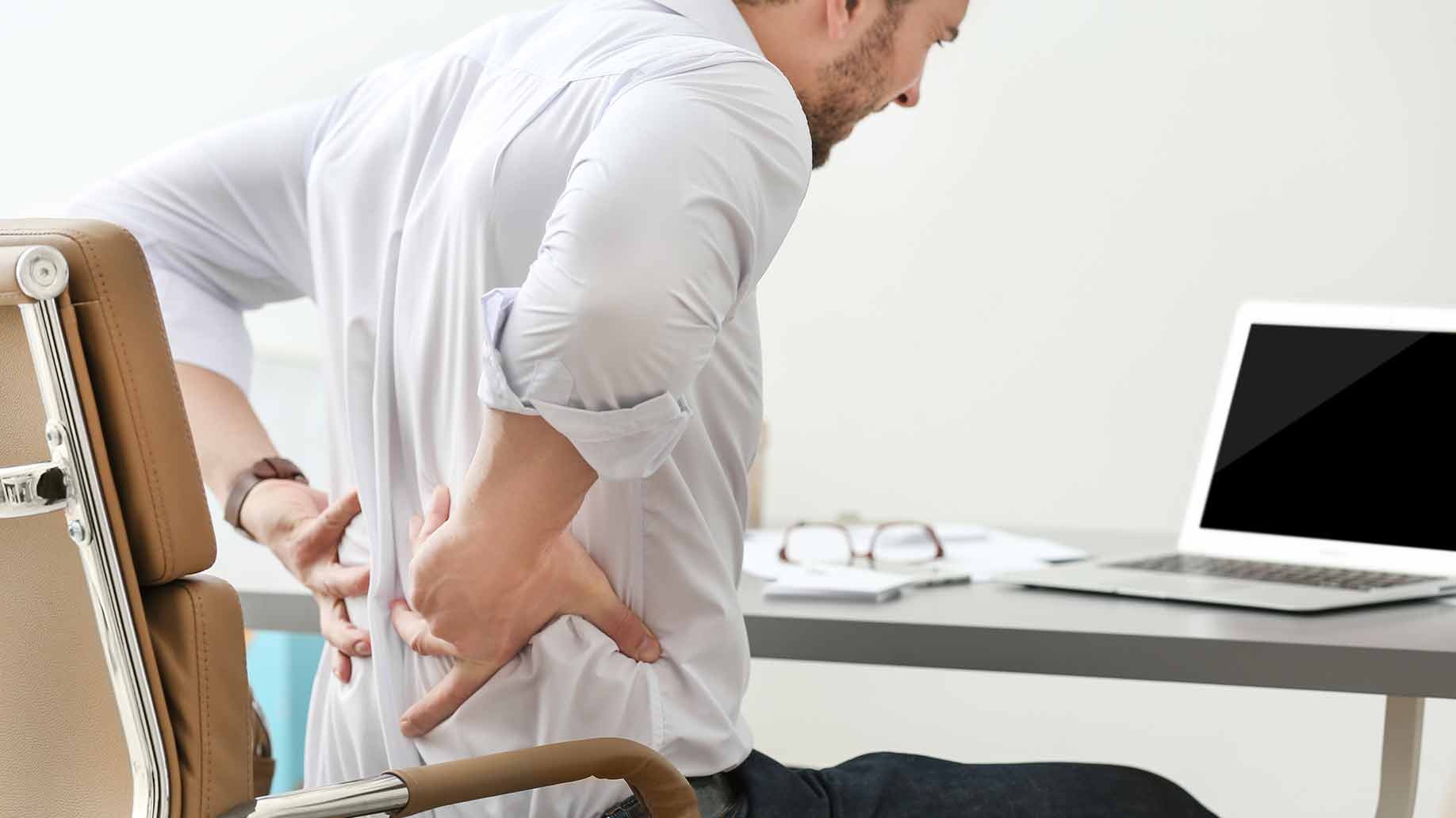People who sit for long hours at the office commonly suffer from lower back pain. Its symptoms vary from a sudden sharp pain to a dull but constant ache.
At least 31 million Americans suffer from lower back pain according to the American Chiropractic Association, with the condition most often emerging around age 30 and worsening around age 60 to 65 due to physical changes the body undergoes. Although the discomfort can improve in a matter of weeks, it can be a recurring concern. Without proper attention, lower back pain can lead to challenges and musculoskeletal complications later on.
Sitting and Its Effect on the Lower Back
Office employees are confined to their desk nearly 80 percent of the time at work. This makes them susceptible to poor posture habits like hunching and leaning forward while sitting, all of which contribute to the wear and tear of the spine. A fixed position like this also constricts the body’s blood circulation that deprives the spine of oxygen and nutrients.
An amazing way to protect your back from unnecessary pain whilst in the office is simply to make sure your working environment is correctly set up. If you suspect a change of desk could solve your back-related woes, be sure to look at different office tables available online as you’re sure to find one that perfectly suits your working and sitting style, as well as your budget. There a few other ways you could mitigate such pain in the form of specially designed products. The Posture Stand is an amazing way to ergonomically set up your workspace so that your screen is at the correct eye level, meaning you sit up straight, don’t hunch, and keep your posture healthy in order to stop any aches and pains after a long day in the office. With 360-degree rotating legs, the Posture Stand can be configured to suit your needs and a wide range of environments – from the office to the sofa or even the bed.
Sitting for eight hours in front of your office desk promotes a sedentary lifestyle. Experts said that this raises health issues worse than smoking. Prolonged sitting also promotes obesity, which can lead to diseases like diabetes and heart disease.
Movement, therefore, is important if you work in this type environment. Take steps to lower the risks of sitting for a prolonged period and experiencing lower back pain at work:
- Support the inward curve or your lower back with a pillow or rolled up towel.
- When sitting, angle your hips and knees well by using a footstool.
- Resist sitting with your legs crossed and keep both feet flat on the floor.
- At home, take a side sleeping position and bend your knees. Your legs should have pillows in between for cushion and support.
- Get a DIY massage treatment using a TENS machine to relieve muscle pain at the end of the day.
- Ask your doctor about over-the-counter pain medicine if discomfort is affecting your ability to do your tasks.
Preventing Lower Back Pain at the Office
1. Pick a good chair
Ergonomic chairs have been all the rage since the ’80s but having one at work is not enough. A good chair should also provide support specific to your needs.
For instance, you’ll need to adjust your ergonomically designed chair to your proper height, eye-level, and arms and elbows rest level vis-a-vis your position at the desk. Also, check the chair’s back cushion comfort and make sure you don’t have to slouch or slump just to feel it. It should mold the curve of your spine well.
2. Move and do it often
Shift your position from time to time. Get up from your seat to stretch or walk, perhaps head to the copy room, fetch a glass of water in the office’s snack room, or take a bathroom break. If you have a longer time, you might benefit from a good walk outside of your office for at least 20 minutes.
A static posture makes your body feel more tired and stressed. In fact, more office workers file for sick leaves and absences because of issues with their lower back, hence you’ll need to get moving to warm up your muscles, ligaments, and joints that will prevent the pain and injury.
3. Raise your health issues with your employer
These days, many companies invest in alternative work environments where employees are provided treadmills or static bikes for their desks aside from chairs. The concept of a standing desk has existed since the 1700s but it’s more popular than ever today because the office environment is changing. People at work are glued to the Internet more via laptops, tablets, and smartphones which encourages them to move their muscles less and less.
You can also consider establishing a fitness program with your co-workers after work. Your company might be willing to pay a trainer for twice-a-week full-hour exercise or yoga sessions. And consider speaking with your immediate superior to make adjustments to your tasks, especially if you have persistent lower back pain.
4. Get a doctor’s help
Back pain might be a symptom of an underlying condition. It’s best to consult with a medical professional for diagnosis, advice, and recommendation. The earlier you get a diagnosis, the better your chances of managing back pain.
If you want to take a more proactive approach, you can also start and end your day with home exercises. Stretching makes your muscles, joints, and ligaments more flexible and reduces sciatic pain that originates from the hips and travels to the lower back. Workouts that target the muscles of the back, abdomen, and hip also keep the lower back muscles and joints stronger.










1 Comment